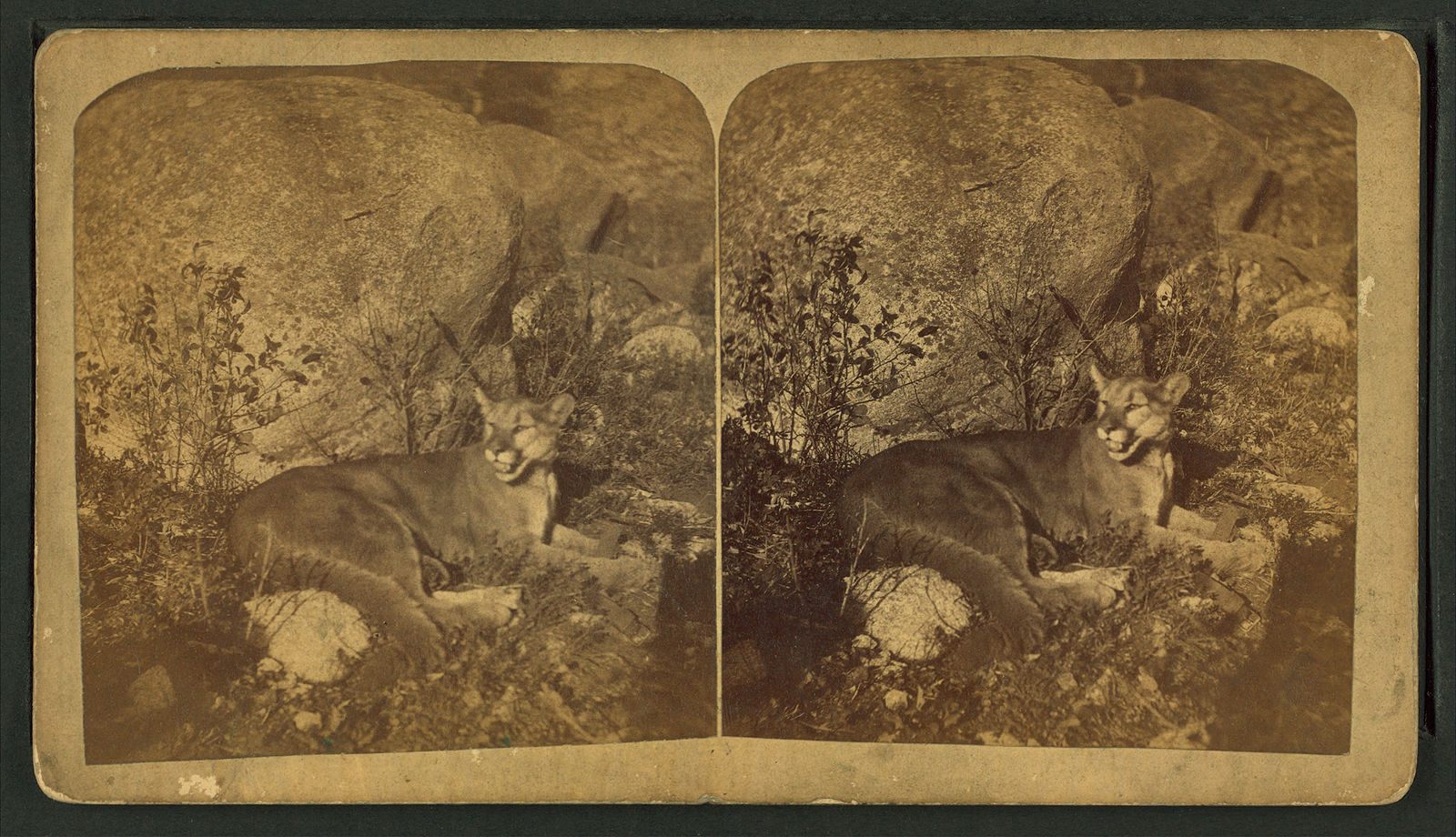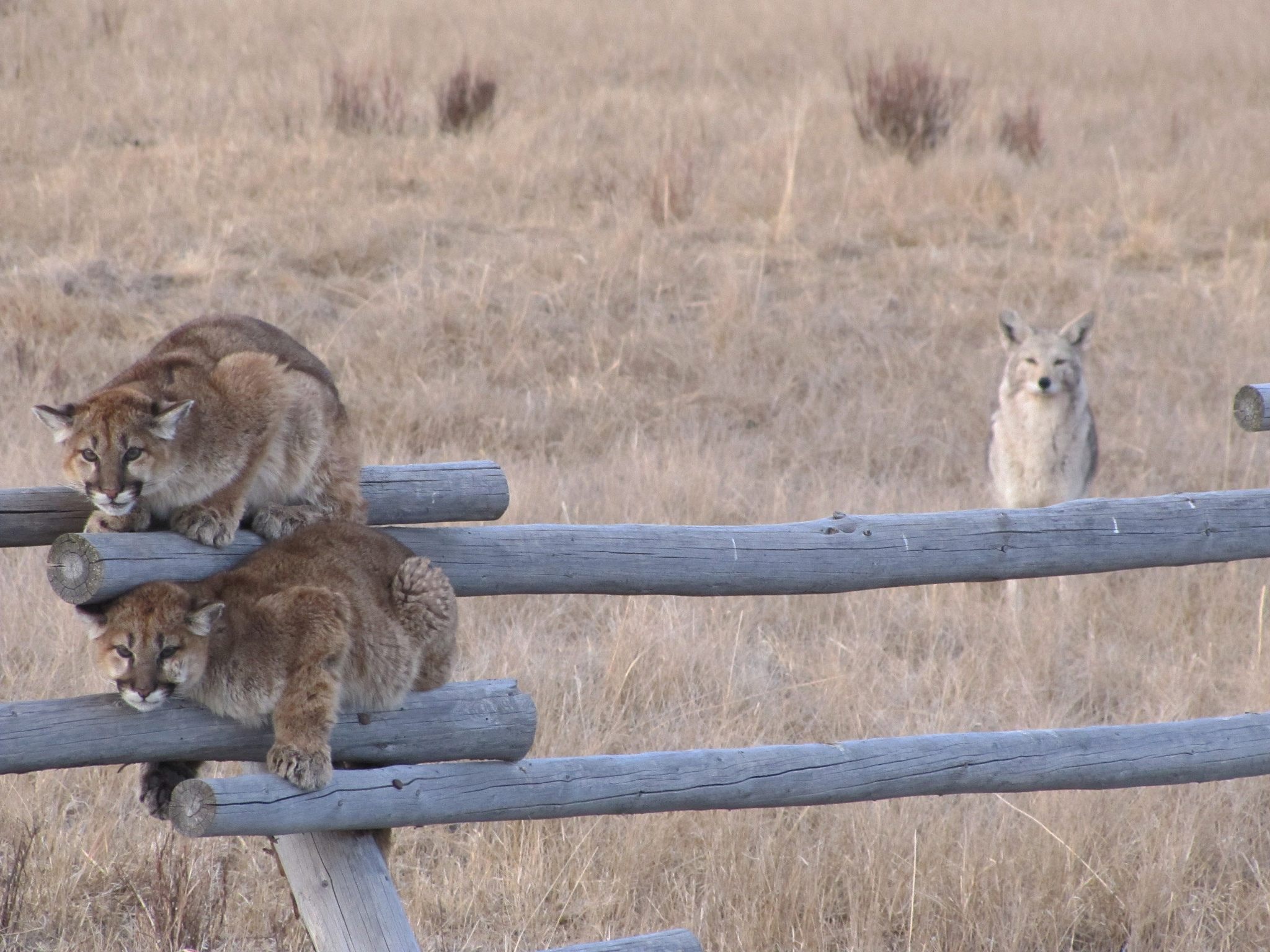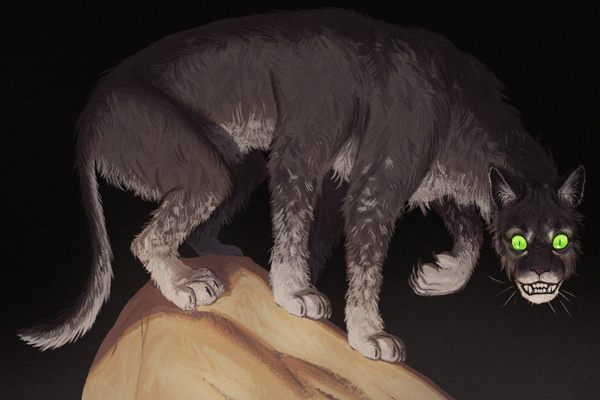The Eastern Cougar Is Officially Extinct
So why do people keep seeing them?

It was 1983 when Todd Lester saw his first and only East Coast cougar, in the wilds of West Virginia. He had been out hunting the day before, and his redbone coonhound, Trigger, had run off. Lester got up at the crack of dawn to go look for his dog. “I spotted something moving coming down the hill, and it looked like [Trigger],” he says. “I thought it was him. It saw me about the same time, and it was a mountain lion. It looked at me just a second, turned around, and headed back up the hill.”
Some time later, he went out hunting again. This time, he ran into a couple of game wardens. When he asked them about what he had seen, they scoffed: “They said, ‘You didn’t see a cougar—they’ve been extinct here for a hundred years,” Lester recalls now. “They said, ‘You probably saw a dog.’” And I said, ‘No, I was looking for a dog when I saw it!’”
On January 22, the United States Fish and Wildlife Service announced that, starting in late February, the eastern cougar would be removed from the federal Endangered Species list and declared officially extinct. This has been in the works for years: the FWS reviewed the subspecies in 2011, and began fielding public comments about delisting in June of 2015. In fact, according to the written ruling, the last official eastern cougar specimen was killed in Maine in 1938, a few decades before it was added to the list in the first place.

And yet there Lester found himself, locking eyes with what he maintains to this day was a cougar in the east. He is far from the only one: over the past century, people have been spotting cougar-like creatures up and down the coast. Community message boards from Higganum, Connecticut to Hackettstown, New Jersey still bristle with reports of “wild cat[s] the size of a big dog” or “tawny-colored” beasts in the southbound left lane of the highway. So what, exactly, have they all been seeing?
Not too long ago, cougars—also known as pumas, mountain lions, catamounts, and painters—had the run of North America. When European colonists began arriving on the east coast in the 17th century, they quickly formed a negative opinion of the continent’s chief feline, one that was redoubled by its tendency to eat livestock. “Its countenance is a mixture of every Thing that is Fierce and Savage,” the Boston Gazette reported in 1738, after one was captured and killed 80 miles west of the city. “He is exceedingly ravenous and devours all sorts of Creatures that he can come near.”
By 1807, Connecticut, Massachusetts and Pennsylvania had put bounties on the big cats. By 1900, according to the Cougar Fund, they had been “effectively exterminated from most states east of the Mississippi River” (with the notable exception of Florida, which still has around 200—but more on that in a minute). And in 1938, the last adult cougar officially known to have been born and raised in the non-Floridian East was killed by a trapper in Maine.

There are a couple of things that make this eastern cougar narrative messy, though. The first is taxonomy. When they were first studying them, biologists separated American cougars into many different subspecies according to their geographical ranges. These included the western cougar, the eastern cougar, and the Florida panther. But more recently, there have been doubts that these varieties are actually genetically distinct. Many experts now consider all North American cougars, including the eastern and Floridian varieties, to be members of the same subspecies, Puma concolor couguar.
This is somewhat related to the second complication: all of these mysterious sightings, which Lester has been cataloguing fastidiously since the late 1990s. After his own cougar encounter, he couldn’t get the cats off his mind. A stint in the Air Force soon took him down to Florida, where he worked with Florida panther rehabilitation groups and learned more about the species. Eventually, he returned to West Virginia, and in 1998, he started the Eastern Cougar Foundation. “I decided to try to prove that they were here,” he says.
The Foundation served as a kind of cougar investigation service, following up on tips from the public. People would hand over evidence: detailed descriptions of encounters, murky snaps of tailed creatures, and photos of large paw prints. “People were sending us scat samples,” says Christopher Spatz, the group’s current president, who originally joined in 2006. “We had some of the top cougar biologists in the country investigating reports,” including the late Bob Downing, a Fish and Wildlife Service biologist who spent six winters searching the Appalachian Mountains for cougars on behalf of the government. Spatz estimates that over the course of the group’s existence, they’ve fielded hundreds of these tips, “from Nova Scotia to Mississippi.”

Such detective work was an attempt to solidify rumors that had been circulating up and down the coast for decades. By the time Lester had his initial sighting, he was already steeped in tales of cougars roaming the Appalachians. Spatz had also spent his life hearing about local cats: living near his childhood home in northern New Jersey, or loping around his favorite rock climbing spots in the Catskills. In fact, that’s why he joined the Foundation in the first place, he says: “The idea that it’s still harboring a cryptic population of these magical cats was really compelling.”
Over and over again, though, the evidence was not. Plenty of tips simply can’t be properly followed up on: tracks disappear in the rain, cries die out in the night air, and large mammals slink off into the trees long before the puma gumshoes get there. Then there are those sightings that mix confusion with wishful thinking. People cry cougar at bobcats, fishers, dogs, and coyotes. “Two years ago, we got a picture from the Adirondacks that a number of people sent to us,” Spatz says. “We looked at it, we had some biologists from other organizations look at it, and we determined it was a house cat.” (This happens more frequently than you might expect.) Others fall for internet hoaxes, in which photos from the West are said to be from the East instead.
Very occasionally, a real cougar will wander through the East, says Spatz. Lester sent government documents he has obtained via Freedom of Information Act (FOIA) request describing “reliable observations” of a mountain lion by officials in West Virginia in 1995, and of a female with two kittens in Kentucky in 1997, farther East than cougars are generally considered to live.
But genetic analysis, when performed, reveals that almost all contemporary examples of this are escaped pets from roadside zoos. (This, too, has been happening for decades: Downing once gathered a testimonial from a man who killed a cougar in the 1920s that “threatened to attack him while frog hunting,” and the man posited that the cat had “escaped from a wrecked circus train.”) The only proven exception is an adventurous young male that came east from South Dakota in 2009. He traveled a thousand miles searching for a mate, and instead found Greenwich, Connecticut.
Meanwhile, out West, cougars began expanding their range for the first time in about a century, wandering into places like Wisconsin and making their presence extremely known. “They were getting hit, they were getting shot, they were coming into towns and cities,” says Spatz. “If the cats were here, we should be getting the same kind of evidence.”
So in the late 2000s, the group renamed themselves the Cougar Rewilding Foundation, and shifted their goals away from cougar-searching. (Lester also stepped down from the presidency around this time, in order to take care of a family member who got into a car accident, although he hasn’t given up on the search: “It’s easy to sit behind a desk somewhere and say that cougars don’t exist anywhere in the Eastern States,” he says. “But to know the real truth, you got to put your hiking boots on and hit the woods and search for evidence.”)

The group as a whole is now focusing its energy on arguing that it’s time to reintroduce western cougars to the east coast, where they can rebalance the ecosystem by slotting back into the top predator spot.
Ironically, there’s a chance that this delisting might help just a bit with this goal. Reintroducing the puma to appropriate habitats, such as the Adirondacks or the Great Smoky Mountains, would be a state-by-state decision. If the eastern puma was still on the endangered species list, it might make for a regulatory hurdle. Now that it’s been stricken from the books, it won’t.
Spatz says this is a hypothetical benefit, as concerted efforts to bring the cat back aren’t likely in the short term: Thus far, “we’ve gotten no traction with anybody in terms of getting the reintroductions going,” he says. But with the delisting in the news, he expects another, immediate side effect: “I imagine we’ll get a burst of reports for several months.” The eastern cougar is dead—long live the eastern cougar.















Follow us on Twitter to get the latest on the world's hidden wonders.
Like us on Facebook to get the latest on the world's hidden wonders.
Follow us on Twitter Like us on Facebook